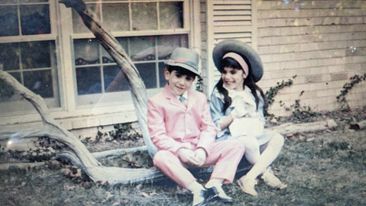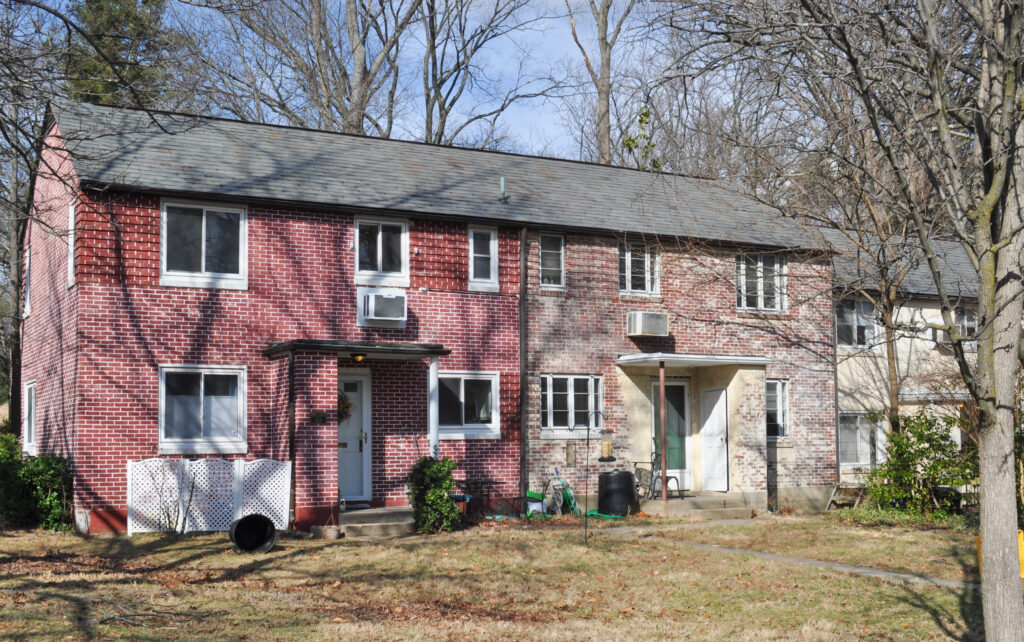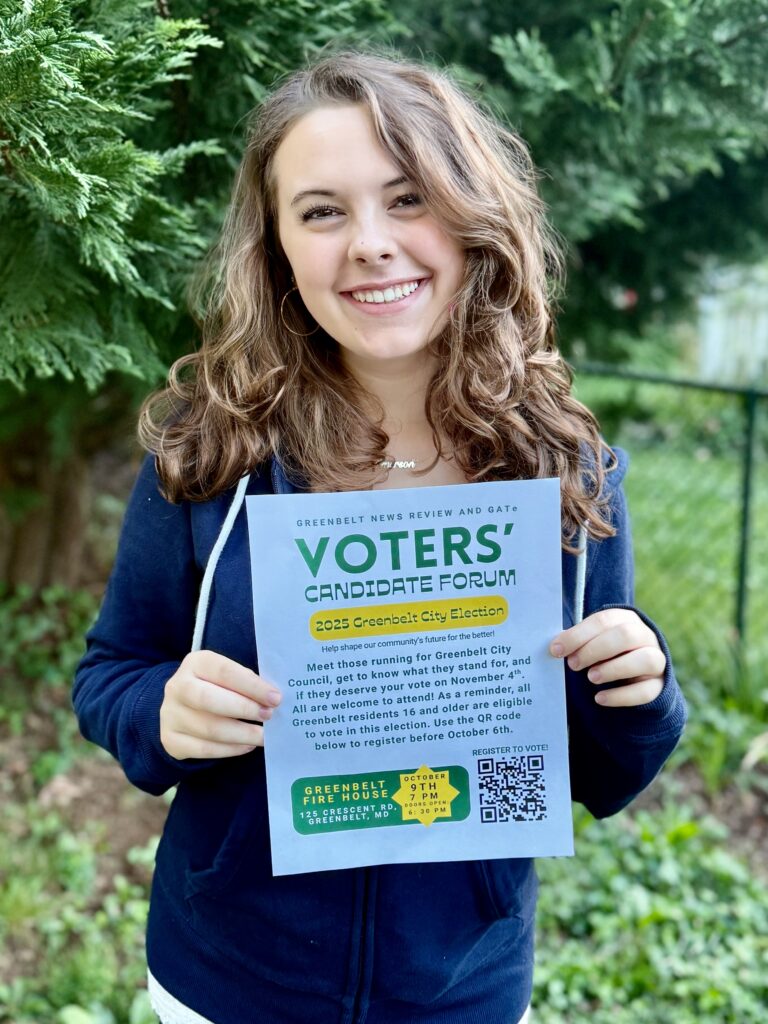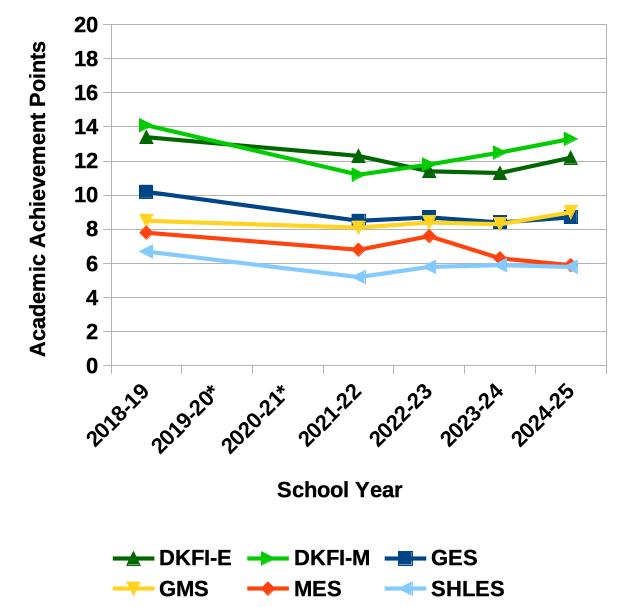Part One of a Two-Part Story
Secret passages, ladders and Lego house designs are among the memories of seven Greenbelters who live in their childhood homes. Hopi Auerbach and Heather Hart on Ridge Road, Dorothy Dobson and Eva Garin on Lakeside Drive, Marc Siegel on Maplewood Court, Lesley Kash on Woodland Way and Jonathan Murray on Ridge Road invited the News Review into their homes.
Beginnings
Dobson’s family arrived when she was 6 months old, and Hart’s when she was 2 years old. Siegel remembered moving as a small child, Kash and Murray in elementary school, and Garin and Auerbach at 15.
Dobson’s parents, Fred and Dorothy Baluch, built their house in 1959, moving with six children (two more followed) after building and living at another Lakeside house. Howard and Fann Kash moved with Lesley to Woodland Way around 1963 before sister Kim’s birth. In the early 1960s Siegel’s parents, Harold and Connie Siegel, bought their Maplewood house, today known for its yard decorations on the Greenbelt Lake path. Garin’s parents Robert and Sonia Garin built their Lakeside home in 1964, with Eva, younger brother Michael and grandfather.
Jerry and Marie Hart and Heather arrived in the early 1970s from Camp Springs, Md. Auerbach’s parents, Bob Auerbach and Mary Carson, moved from a smaller GHI with Hopi and younger sister Jennine around 1970. Murray’s parents, Joe and Alice Murray, came from Woodland Way, building their Ridge Road passive solar house with early 1980s energy efficiency tax breaks. Jonathan, about 7, helped the builders move cement blocks, earning the nickname “Blockhead” from older brother Joey. Inside the unfinished house, warned by his father to avoid the open airshaft and promising he would, he instead fell from the second floor to the basement, no harm done.
Growing Up
Jonathan Murray said the house had extensive insulation, large south-facing windows, interior spaces further enclosed with glass, and crawl spaces and window treatments to manage temperature. He remembers cold mornings and the bathroom heater, but also that the basement wood stove was little needed, though appreciated by a rat snake his father showed him on a beam over the stove (“Don’t tell your mother.”). He and friends used the garage attic as a clubhouse, playing video games, sweating in the summer and decorating beams with graffiti (which he repainted before his children asked about the words). He also rebuilt a VW in that garage.
Eva Garin’s father planned their 1964 passive solar house. Its spaciousness and privacy stand out in her memory because her family of five came from a one-bedroom apartment. The basement contained her parents’ master suite and a rec room, while the main floor had a great room from front to back, a wood cathedral ceiling and floor-to-ceiling windows at both ends. That floor had bedrooms for her, her brother and her grandfather, whose room had a half bath and door to the backyard (places that were his smoking areas). A house rule had everyone in their bedrooms by 11 p.m., which “worked out nicely because I had a regular bedtime and the house was quiet.” Before 11, it was often a party house, with adults upstairs and children downstairs, sometimes decamping to the Weintraub house two doors away. Thirty-person Passover seders were normal, at a table the length of the great room.
In Marc Siegel’s home with eight children, bedrooms included a bunk bed room for three brothers and one for sisters. He used the sub-basement for alone time. He later got his own room with an exterior door useful to a teenager, though below his parents’ room. At meals he felt he had to beat his siblings to the food. Seven siblings is why he talks fast: “If you didn’t get it out first, you didn’t get it out.”
Hopi Auerbach’s bedroom felt private: it was her family’s GHI dining room, with the dining table in the living room to this day, as in the Greenbelt Museum. She said being a teenager downstairs at night gave her privacy and nighttime walks, “alone and independent.” When younger, with no television she felt different from classmates, not knowing the TV shows they discussed, until the Monkees’ TV show began and “I was no longer willing to not have a TV,” leading to a small black-and-white TV upstairs.
Heather Hart remembers she could always go to her parents for anything. Board games and card games were a staple after not replacing a broken television, as was raising and showing Irish terriers with her mother.
Dorothy Dobson enjoyed growing up with seven siblings in lots of shared bedrooms. The basement had two bedrooms, the first floor three and the attic three. A narrow, dark first-floor hallway led to two bedrooms, in one of which she shared a “huge” bed with sister Ruth: “We had so much fun in that bed, we never slept.” Her brothers accessed their attic rooms through the stairs in her closet. Husband Norm said all the bedrooms were 13’ x 9’, because Dorothy’s father Fred designed the house with Legos.
He also built a basement bomb shelter, equipped with a shovel for digging out. This reporter remembered another Lakeside house once had a bomb shelter, to which Dorothy said, “Yes, my dad built that house, too!” The basement has a second kitchen and a playroom (now a home office), which the sloping backyard makes a bright, above-ground space. She said Fred temporarily replaced the lower windows with wood when she fell through them (unhurt) during a game of chicken.
He built the basement kitchen when her friend Sally Laster’s parents moved to Iowa in Sally’s last high school year, and she and Dorothy lived in the basement. Her two youngest brothers later lived there with a friend whom her parents took in. It has served backyard picnics then and now.
Lesley Kash, a Nancy Drew mystery reader, was sure a small basement door hid a secret passage, so she “painstakingly took off all the screws and took that door off, and of course it was just plumbing.” The main floor had two bedrooms: the master bedroom and her tiny bedroom. When her sister was born she used the tiny bedroom; Lesley moved to the basement.
She said the original Woodland Hills house designs did not take advantage of their potential, and her mother knew it. With no back doors, her mother said going to the backyard from the kitchen (on the upstairs rear wall) meant she had “to go around Robin Hood’s barn,” out the front of the house and all the way around. She would have enjoyed a screened porch, but said it would block light into the basement. And she knew the carport could have been more productive with something built over it, but felt they shouldn’t change the house. It seems that Fann Kash never met Fred Baluch.
Roving Bands of Teenagers
Dobson, Kash and Murray all remembered sledding, Murray north of Ridge Road on sled runs that may or may not have entered BARC property, Kash in Forestway woods and Dobson where the library is now. She didn’t want it to be built in 1970 on “our big sledding hill,” but sledding still happens there today.
Kash said the baby-booming mid-1960s saw “vast numbers of children doing every activity: kickball in the street, sledding, out on the frozen lake, playing in the woods.” She saw the Woodland Hills woods behind her house from a window, she said, but would never go there, didn’t know what they were up to in the woods; they seemed run by noisy boys, and scary.
Murray said he was among “roving bands of teenagers” playing laser tag in the dark, sledding, and biking, including teens from the nearby Clark, Cooney and Spear families. Siegel was outside with lots of kids, skating, kayaking and sailing, playing hockey, hopscotch, red rover, four square and army, with the lake as backyard. He recalled little brother Trevor running naked in Maplewood Court with multiple parents after him. It seemed normal, “just Maplewood with 30 kids going wild.”
Garin was close to best friend Linda White, Elaine Zubkoff (Blackman) and Barbara Skolnik (Goldman). The Weintraubs, Paskalides and Sterns were near neighbors. She loved being near the lake; in winter, a police car would be parked on the ice as a sign it was really frozen, ready for skating. She relished the freedom of walking everywhere, including North End School summer camps. Younger brother Michael wanted to go, too, sneaking from Lakeside to the school: “My parents went berserk looking for him.” Of the pool she said, “It was just wonderful, and one summer they did water ballet; oh my God, I loved it so much.”
Friends with Ladders
Auerbach’s best friend Mindy Walder was one year older: “We were Beatles fans together.” She loved walking through Old Greenbelt’s underpasses, learning they protected children from traffic. She remembers their graffiti: “Some of the words I knew, but one I didn’t and that’s the one my parents told me was a really bad word.”
Hart used the Library underpass to go to Center School. Living near the Gardenway-Parkway overpass, her high school friends met at her house to walk to Eleanor Roosevelt, where she played flute in the Wind Ensemble.
Dobson’s best friend Sally Laster “was always over here, telling my mom ‘this is where the fun is.’” Lakeside neighbors the Weiners owned the Ben Franklin store in Roosevelt Center, where Mrs. Weiner gave them candy. “You knew all the neighbors. My mother was very social, she knew everyone. It was a wonderful place to grow up. We could ride our bikes to the grocery store, the lake, the pool, the tennis; everything was here.”
Some of Kash’s Woodland Hills neighbors were the Donnellys, Gaffneys, Marions and Kastners. The Gaffney sisters led explorations of their brothers’ fort in the woods. Sandy Marion’s family was “so prosperous, she had all the Nancy Drews,” so in the dark as a snowstorm began, Kash walked to her Forestway house for the next book, preparing to be snowbound. In junior high, Sandy and sister Jody hosted a backyard party, “the coolest social occasion ever, with so many kids, and not one but two bands” consisting of Sandy’s boyfriend and his friends, and Jody’s friends including Bob Reilly, a local musician to this day. “The matching suits – we were so impressed, you would have thought the Beatles were there.”
Siegel said neighbors Mrs. [Louise] Craig and Mrs. [Gudrun] Mills (later Greenbelt city clerk) were his other mothers, and described good times with Maplewood children Gina Mills, Edith and George Beauchamp, and next-door neighbor Debbie Craig. Gina and Edith still live in their Maplewood childhood homes. “Naughty stuff … Three of us boys, I told them that when Debbie changes, she doesn’t pull her shade. So one night we all got this ladder – I still have it. I was at the bottom, James and Doug climbed up, and she was undressing. We got so nervous we fell off the ladder. Every time I talk to her, I remind her how we almost saw her naked.”
Next week: Not Your Typical Boomerang Kids




